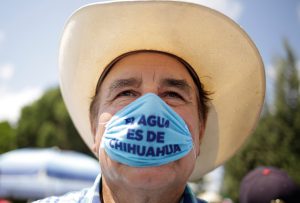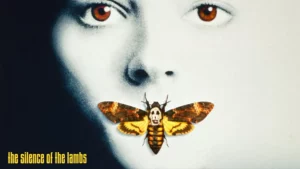
¿Cuándo fue la última vez que le hiciste un cumplido a tu mejor amigo? Para algunos, esta puede ser una pregunta fácil, para otros no tanto.
Ven con nosotros mientras abrimos el diario de cumplidos con nuestra versión de una tendencia popular de TikTok en que la gente les hace cumplidos a los extraños. Sin embargo, en esta version, nuestros participantes le hacen un cumplido a su mejor amigo. En “Querido Mejor Amigo” puedes aprender la diversidad entre cómo nos halagamos como individuos y miembros de grupos sociales, mientras analizas ciertos cumplidos de nuestros participantes. Escucha cumplidos sinceros de cuatro estudiantes de St. Marys (Carolina Vaca Salas, Brissa Campos, María Grazia Cossio, y José Francisco Chamán Álvarez) cuyo primer idioma es el español, y aprende de las diferentes maneras que tienen de alegrar a sus amigos. A través de este podcast, sabrás más de algunos temas pragmáticos como los vocativas, la anticortesía, la intensificación y más. Entonces, ¿a qué esperas? ¡Ven y escucha!
Y no te olvides… ¡TUS MEJORES AMIGOS MERECEN CUMPLIDOS!
Referencias
Lopera, S. A. (2013). Reflexiones sobre el uso del acto del habla de los cumplidos. Íkala, revista de lenguaje y cultura, 18(2), 87-93.
Lopera Medina, S. A. (2015). Estrategia de repuestas en los cumplidos. Tonos Digital, 29, 1-31.
Lopera Medina, S. A. (2015). La caracterización de los cumplidos en una población universitaria. Íkala, revista de lenguaje y cultura, 20(1), 61-77.
Maíz-Arévalo, C. (2020). Los cumplidos. In M. E. Placencia & X. A. Padilla (Eds.), Guía práctica de pragmática del español (pp. 29–39). Routledge.



4 comments
Jennifer Lynn
El podcast tuvo tanto interesting contenido sobre cumplidos. Era tan interesante ver diferentes modos de dar cumplidos y identificar como mis amigos y yo damos cumplidos, también como los relation es sociales impactan como comunicaron con otros. Quisiera ver mas en cómo diferentes generaciones comunican con cumplidos.
mcordero3
En este grabación están hablando en los diferente tipos de cumplidos. Empezaron a describir la ultima vez que ellos dieron un cumplido. Amanda dijo que para ella fue cuando su hermana estaba tocando musica en el caro. Steph estaba diciendo que para sus amigos los cumplidos tienen connotación negativa y que viene de la cultura. Ella dice que sus amigos pueden distinguir qual palabras son bromas o cuáles son groseras. También invitaron estudiantes de St. Mary’s Universidad para habla de su cultura y explicar la diferencia en cómo hablan a sus amigos. Me gusto que usaron una tendencia de TikTok que yo conoce. Yo recuerdo cuando lo vi el primarla vez. Había un hombre con una micrófono gritando cumplidos as las mujeres. Las mujeres se ponían enojados hasta que se dieron cuenta que estaba dijeron algo bueno. Este episodio me enseño que hay varias maneras de hablar con mis amigos y familia.
Nicole Estrada
Hola Amanda y Stephanie. ¡Gran podcast! Pensé que hiciste un gran trabajo discutiendo tu tema. Me pareció interesante cuando Stephanie dijo que usa “malas palabras” para felicitar a sus amigos porque hoy en día creo que mucha gente usa esas palabras para felicitar a otros, al menos la generación más joven. Cuando lo pienso, he notado que mis amigos me han felicitado usando ese tipo de palabras. Gran podcast en general.
Joy Hernandez
Increíble podcast, ¡definitivamente disfruté de la lista y me reí! Tengo que decir que esto me hizo preguntarme cuándo fue la última vez que le di un cumplido a uno de mis amigos más queridos, y en realidad me di cuenta de que lo hago todo el tiempo. Tengo que estar de acuerdo con Stephanie cuando dijo que usa “palabras vulgares” para complementar a sus amigos ¡¡ES VERDAD!! Creo que tiene que ver con la generación en la que vivimos hoy, donde palabras como esas son en realidad cumplidos. No pasa un día en el que mis amigos y yo hagamos comentarios así, ¡pero nos encanta! Aunque de vez en cuando envío un mensaje a mis amigos expresando cuánta buena persona son, o cómo nunca deberían ponerse más bajos que nadie, o cómo ningún hombre es capaz de tenerlos porque son tan inteligentes jaja:) Disfruté escuchando las diferentes formas y expresando a los invitados, creo que escuché diferentes dialectos, lo cual fue agradable escuchar las diferencias en español. Este podcast me ayudó a recordar que los amigos son importantes y merecen cumplidos. Una vez más, ¡buen podcast!